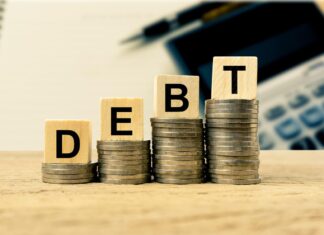There is a dearth of foreign currency liquidity in the country, as the central bank tries to maintain an official inter-bank rate at artificially suppressed levels. As the PKR started depreciating, and became a politicized tool, the ‘independent’ central bank started managing its price. Earlier it at least pretended that there was no management, and that the price of the US$ against PKR was fair, but lately they have stopped pretending as well. However, as the price remains artificially suppressed, the flow of foreign currency into the country through formal channels has slowed down to a trickle.
Households receiving remittances are getting an increasing number of remittances through the informal channels. Similarly, any institutions looking to bring in foreign currency liquidity to invest are also delaying bringing in the same given an expectation that PKR is set to depreciate against the US$. Finally, export receipts have also slowed down, as exporters try to delay receipt as much as possible to get a better rate in the near future. Due to such dynamics, the spread between the exchange rate managed by the central bank, and the exchange rate at which transactions are happening in the open market, or on the margin continues to increase.
Only about a year back, the central bank imposed draconian measures to restrict purchase of foreign currencies through exchange companies. Numerous layers of scrutiny and documentation were added to discourage the same, thereby creating grounds ripe for a shadow of black market. Time and again, institutions have tried to tweak market prices, and everytime they have failed, or have made the situation worse. Markets are humbling, but individuals managing affairs may just have the humility to learn from such humbling experiences. Fast forward, a full one year later, we have a parallel exchange rate at play.
Currently, there are three exchange rates. An inter-bank rate, which is the official rate at which banks transact with each other, or use for conducting trade, etc. An open-market rate, at which individuals can buy foreign currency from licensed exchange companies. However, the same rate is defunct, as there is no supply available at that particular rate. One can have enough demand, but it is a market and price failure if there is no supply in the market at that price.
Finally, the third price is that of the black market, or shadow market. This is the price at which transactions are happening in the ‘real’ open market, where demand and supply sets the price. Some people may say that they are illegal – well, yes, they are illegal. But the core function of a market is determination of an equilibrium point, which is referred to as the price where demand and supply interact. If institutions that are responsible for ensuring orderly conduct of the market prefer to fix a price irrespective of demand and supply dynamics, then a shadow market will eventually emerge.
The same has been observed in economies with a currency crisis over the years. As the official price fixed by the regulator diverges away from the actual open-market price, the crisis deepens further. Currently, the shadow market price is at a premium of roughly 10 percent to the inter-bank price, but if the institutions continue to keep a fixed price and continue to pretend that there is no currency crisis, then the premium is only going to increase further.
As long as institutions and the government continue to try to fix a price without taking into context demand and supply dynamics, there will always be imbalances, and there will always be shadow, or black markets. If we want shadow markets to stop existing, then we should also stop interfering with prices, and let the market function. We should focus on improving market structure and enabling price discovery through the market, rather than shutting it down and allowing shadow markets to prosper. We can either focus on fixing structural imbalances, or we can continue to believe that a certain arbitrarily fixed price is better than a market determined price.
























Economy is not stable worldwide. World is facing economy crisis after corona, there should be monitoring and control in black market and central bank should take better actions.
ARE YOU A VICTIM OF CRYPTO SCAMS AND WANT TO GET BACK YOUR STOLEN CRYPTOS!!
Am here to testify the handwork of A Great Verified Hacker ( Mr Morris Gray )Who helped me recover back my lost funds from the hands of scammers who Ripped me off my money and made me helpless, I could not afford to pay my bills after the whole incident, But a friend of mine helped me out by given me the contact info of trusted Recovery Expert, his email: Morris gray 830 @ gmail . com contact him or chat him up on (+1- /607-69 )8-0239 ) and he will help you recover your lost funds If you have been a victim of any binary/ cryptocurrency or online scam, Mobile spy, Mobile Hack contact this Trusted and Verified hacker, He is highly recommendable and was efficient in getting my lost funds back, 11btc of my lost funds was refunded back with his help, He is the Best in Hacking jobs, contact him ( MORRIS GRAY 830 AT) GMAIL (DOT) COM..!!